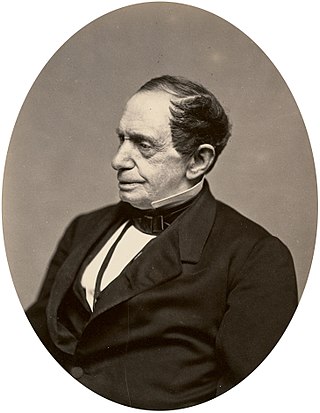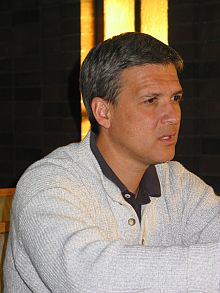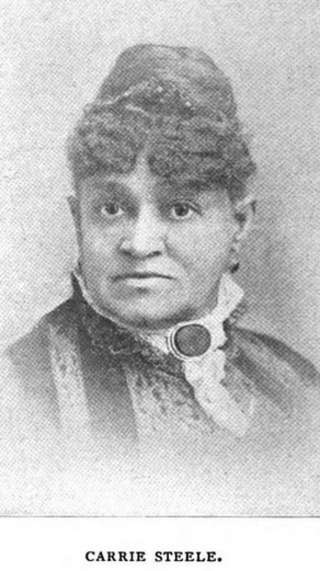
Johns Hopkins was an American merchant, investor, and philanthropist. Born on a plantation, he left his home to start a career at the age of 17, and settled in Baltimore, Maryland, where he remained for most of his life.

An orphanage is a residential institution, total institution or group home, devoted to the care of orphans and children who, for various reasons, cannot be cared for by their biological families. The parents may be deceased, absent, or abusive. There may be substance abuse or mental illness in the biological home, or the parent may simply be unwilling to care for the child. The legal responsibility for the support of abandoned children differs from country to country, and within countries. Government-run orphanages have been phased out in most developed countries during the latter half of the 20th century but continue to operate in many other regions internationally. It is now generally accepted that orphanages are detrimental to the emotional wellbeing of children, and government support goes instead towards supporting the family unit.

Avondale University is an Australian private university affiliated with the Seventh-day Adventist Church. It is a part of the Seventh-day Adventist education system, the world’s second largest Christian school system. It has two campuses, the Lake Macquarie campus being the primary campus situated in Cooranbong, New South Wales. The other campus is located at Sydney Adventist Hospital in the Sydney suburb of Wahroonga and is the main campus of the nursing school.

Sydney Adventist Hospital, commonly known as the San, is a large private hospital in Sydney, Australia, located on Fox Valley Road in Wahroonga. Established on 1 January 1903, as a not-for-profit organisation, it was originally named the Sydney Sanitarium from which its colloquial name was derived. The hospital is operated by the Seventh-day Adventist Church, whose South Pacific Division headquarters are located in the immediate vicinity of the San. The hospital offers a broad range of acute medical, surgical, diagnostic, outpatient, support and wellness services, including Executive Health Checks at the Fox Valley Medical & Dental Centre.

Catherine Spalding, known as Mother Spalding, was an American educator who was a co-founder and longtime mother superior of the Sisters of Charity of Nazareth. She pioneered education, health services and social services for girls and orphans in Louisville and other Kentucky cities. On January 6, 2003, the Louisville Courier-Journal named Spalding as the only woman among sixteen "most influential people in Louisville/Jefferson County history."

Laura Smith Haviland was an American abolitionist, suffragette, and social reformer. She was a Quaker and an important figure in the history of the Underground Railroad.
Wat Preah Yesu is a children's orphanage, school and church located outside the town of Siem Reap in Siem Reap Province, Cambodia. As of 2007 it cares for around 134 children. Many of the children have been orphaned by HIV/AIDS, and some of them suffer from the disease themselves. The orphanage is run by members of the Seventh-day Adventist Church.

Carl Wilkens is an American Christian missionary and the former head of the Adventist Development and Relief Agency International in Rwanda. In 1994, he was the only American who chose to remain in the country after the Rwandan genocide began.

The Orphan Train Movement was a supervised welfare program that transported children from crowded Eastern cities of the United States to foster homes located largely in rural areas of the Midwest. The orphan trains operated between 1854 and 1929, relocating from about 200,000 children. The co-founders of the Orphan Train movement claimed that these children were orphaned, abandoned, abused, or homeless, but this was not always true. They were mostly the children of new immigrants and the children of the poor and destitute families living in these cities. Criticisms of the program include ineffective screening of caretakers, insufficient follow-ups on placements, and that many children were used as strictly slave farm labor.

The Seventh-day Adventist Church in Tonga, is one of the smaller religious groups in the South Pacific island state of Tonga, with a reported 3,853 members as of June 30, 2020. The church was started by Seventh-day Adventist missionaries from the United States who visited in 1891 and settled in 1895. They set up schools but made very little progress in conversion, handicapped by dietary rules that prohibited popular local foods such as pork and shellfish, and that also banned tobacco, alcohol and kava.

Dr Dorothy Lavinia Brown, also known as "Dr. D.", was an African-American surgeon, legislator, and Teacher. She was the first female surgeon of African-American ancestry from the Southeastern United States. She was also the first African American female to serve in the Tennessee General Assembly as she was elected to the Tennessee House of Representatives. While serving in the House of Representatives, Brown fought for women's rights and for the rights of people of color.
Hind al-Husseini was a Palestinian woman notable for rescuing 55 orphaned survivors of the Deir Yassin massacre, after they were dropped off in Jerusalem and left to fend for themselves. She later converted her grandfather, Salim al-Husayni's mansion into an orphanage to house them, which became a school providing education to orphans and other children from Palestinian towns and villages.
Porter-Leath, formerly known as the Children's Bureau, is a non-profit organization based in Memphis, Tennessee that serves children and families in the area. Porter-Leath was founded in 1850 as an orphanage and has since grown to six program service areas. The agency retains the early nature of its mission by providing foster care and has also expanded to early childhood education.

The Chattanooga Police Department (CPD) is the primary law enforcement organization serving Chattanooga, Tennessee, in the United States. The department is headed by a chief of police, with one deputy chief and three assistant chiefs commanding the major bureaus of the department: the Uniformed Services Bureau, the Investigative Services Bureau, and the Administration and Support Services Bureau.

The Lincoln Colored Home, also known as the Lincoln Colored Old Folks and Orphans Home, was opened March 8, 1898 and remained in operation in Springfield, Illinois until 1933. It was one of the first orphanages for African American children in the United States. The actual building is still standing and was added to the National Register of Historic Places in 1998.

Msizi Africa is an international charitable organisation set up by Lucy Caslon in 2007. Msizi means 'helper' in Zulu. The charity, based in South London and originally named Mants'ase Children's Home UK, is registered with the UK Charity commission and provides children in Lesotho with nutritious food. Msizi Africa actively supports and closely works with a number of local projects and collaborates with Letsema, a network of service providers working with orphans and vulnerable children in Lesotho. Since October 2015, Msizi Africa Lesotho has been registered as a Lesotho registered charitable organisation.
Emma Rochelle Wheeler was an influential African American physician in the city of Chattanooga, Tennessee, known for opening and operating Walden Hospital with her husband. There, they had inpatient rooms, surgery wings, and a nursing school. She was an organizer of the Pi Omega chapter of Alpha Kappa Alpha.
African Americans are the second largest census "race" category in the state of Tennessee after whites, making up 17% of the state's population in 2010. African Americans arrived in the region prior to statehood. They lived both as slaves and as free citizens with restricted rights up to the Civil War.

Lottie Cornella Isbell Blake, M.D., was an American physician, medical missionary, and educator. Blake was the first black Seventh Day Adventist to become a physician. She is remembered for her revolutionary success in hydrotherapy which at the time was not seen as a sophisticated medical treatment. Lottie Blake, along with her husband Dr. David Emanuel Blake, travelled and worked in Panama, Haiti, and Jamaica as a self-supporting medical missionary. During her life, Dr. Lottie Blake became licensed to practice medicine in Ohio, Tennessee, Alabama, Panama, West Virginia and Pennsylvania. Blake found the cure for “Smokey City pneumonia” which was caused by smog in Pittsburgh, Pennsylvania. After 50 years of service, Lottie Blake was honored by the American Medical Association at eighty-one years old.

Carrie Steele Logan was an American philanthropist, founder of the oldest black orphanage in the United States. The home, The Colored Orphanage of Atlanta, was officially dedicated on June 20, 1892.














